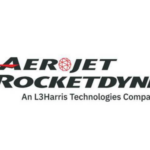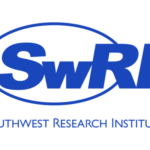Partner News
Aerojet Propulsion System Inserts Mercury MESSENGER Spacecraft into Mercury Orbit
Written by: developer
SACRAMENTO, Calif. (March 21, 2011)![]() — Aerojet, a GenCorp (NYSE: GY) company, announced today that NASA’s MESSENGER (MErcury Surface, Space ENvironment, GEochemistry, and Ranging) spacecraft has successfully achieved the first-ever orbit around the planet Mercury using Aerojet’s propulsion system. MESSENGER was launched aboard a Delta II on Aug. 3, 2004, and has traveled approximately five billion miles and flown by Earth, Venus and Mercury. The successful Mercury orbit insertion (MOI) maneuver begins a year-long study phase of the closest planet to the Sun.
— Aerojet, a GenCorp (NYSE: GY) company, announced today that NASA’s MESSENGER (MErcury Surface, Space ENvironment, GEochemistry, and Ranging) spacecraft has successfully achieved the first-ever orbit around the planet Mercury using Aerojet’s propulsion system. MESSENGER was launched aboard a Delta II on Aug. 3, 2004, and has traveled approximately five billion miles and flown by Earth, Venus and Mercury. The successful Mercury orbit insertion (MOI) maneuver begins a year-long study phase of the closest planet to the Sun.
To slow the spacecraft down sufficiently to be “captured” by Mercury, MESSENGER’s 150 lbf bipropellant engine fired for about 15 minutes. This burn slowed the spacecraft nearly 2,000 miles per hour and consumed nearly a third of the propellant that the spacecraft carried at launch. Less than 10 percent of the usable propellant at the start of the mission remained after completing the orbit insertion maneuver, but that remainder will be adequate for orbit adjustments during the spacecraft’s yearlong science campaign.
After the burn, the spacecraft turned toward Earth and resumed normal operations. Data will be collected by Deep Space Network antennas and transferred for analysis to the Mission Operations Center at the Johns Hopkins University Applied Physics Laboratory (JHU/APL) in Laurel, Md.
The maneuver — completed at a time that MESSENGER is more than 96 million miles from Earth — places the probe into an orbit that brings it as close as 124 miles to Mercury’s surface. On March 18, MESSENGER began its first full orbit around Mercury, and the probe will continue to orbit Mercury approximately once every 12 hours for the duration of its primary mission.
“Aerojet is proud of the data collected by MESSENGER to date,” said Sam Wiley, Aerojet’s chief engineer for the MESSENGER propulsion system. “A successful orbit insertion is a tribute to our propulsion system and to the scientists and engineers from NASA and APL who built and are flying the spacecraft.”
The MESSENGER propulsion system has an unusually high thrust-to-weight ratio enabled by a “dual mode” system (bipropellant main engine; monopropellant thrusters) and mission-enabling thin-walled propellant tanks as well as other innovative system features. Operating on hydrazine and nitrogen tetroxide, the 150 lbf bipropellant engine is accompanied by monopropellant hydrazine thrusters that accompany the main engine and will provide attitude control and wheel de-saturation as the spacecraft completes its mission.
The MESSENGER propulsion system was built for and delivered to JHU/APL by Aerojet in 2003. MESSENGER is the seventh of a series of NASA Discovery Programs–all of which have included Aerojet propulsion.
Aerojet is a world-recognized aerospace and defense leader principally serving the missile and space propulsion, defense and armaments markets. GenCorp is a leading technology-based manufacturer of aerospace and defense products and systems with a real estate segment that includes activities related to the entitlement, sale, and leasing of the company’s excess real estate assets. Additional information about Aerojet and GenCorp can be obtained by visiting the companies’ websites at http://www.Aerojet.com and http://www.GenCorp.com.
###
Contacts:
Glenn Mahone
202.302.9941
[email protected]
Kristin Conner
916.355.2143
[email protected]
This announcement, made by a Space Foundation partner, sponsor or exhibitor, is posted for information purposes only and does not constitute an endorsement of the products, services, events, or companies it covers.


